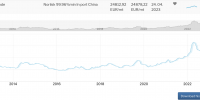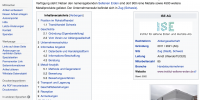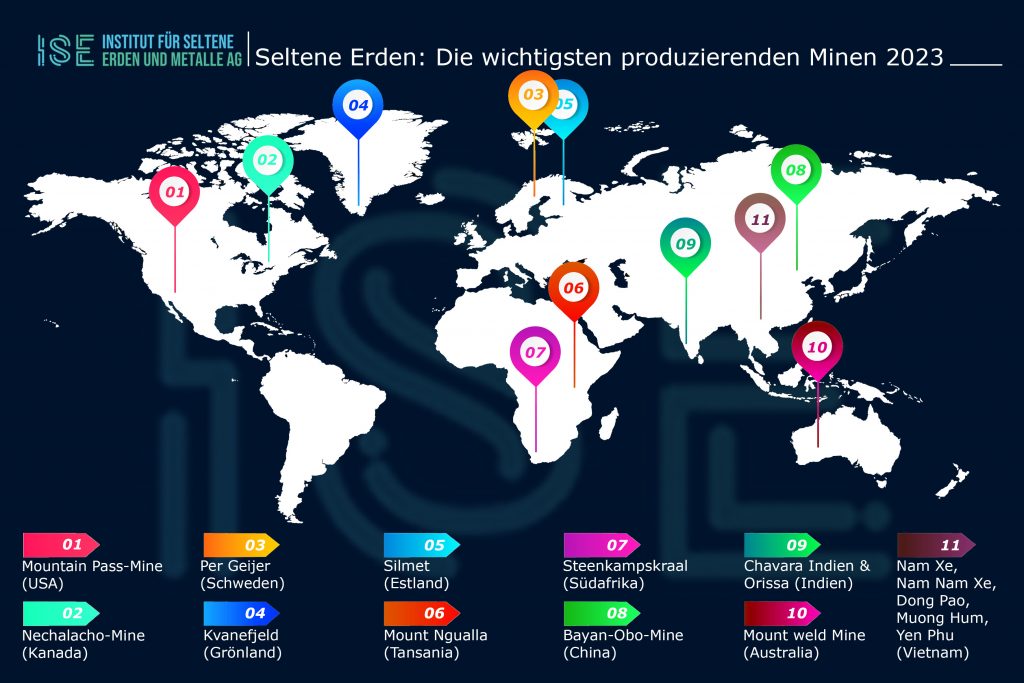By Wolfgang Kempkens
They are special waste, discarded fluorescent tubes. They contain rare recyclables, including the coveted rare earths. Now researchers at the TU Freiberg have developed a process that recovers these raw materials - and is profitable.
Rare earths honor their name, at least as far as "rare" is concerned. Their value is high and easily influenced. China, the 90 percent of Promotes rare earths, has already threatened to cut exports. You can find the rare metals in displays, fluorescent tubes, mobile phones, permanent magnets, batteries and even in polishes.
Disused devices are indeed recycled. But the tiny amounts of rare earths could not be recovered so far. Often, only small amounts are installed, the recovery is too expensive and therefore too expensive.
Chemists at the Technische Universität Bergakademie Freiberg have now developed a process that can recover even the smallest amounts of rare earths and other raw materials such as mercury. The importance of the method lay in the fact that "we can work up all the phosphors in the simplest way, regardless of their rare earth contents," said Professor Martin Bertau, director of the Institute of Technical Chemistry, who led the research work. "We isolate the metals in a pure form of each other - without countless levels of separation, as is the case in the classic rare earth processing."
From a few tons of waste, a few kilograms of valuable materials
But it does not work without any separation stages. The inner coatings of fluorescent tubes, which generate light during operation, are washed off with hydrochloric acid. The result is a kind of mush, called slurry, which in addition to the coveted rare earths yttrium, gadolinium and europium contains impurities such as calcium and barium.
To separate the latter, the slurry is mixed with sulfuric acid. This calcium is gypsum, barium to barite. Now only the rare earths are dissolved in the hydrochloric acid. They are separated by diffusion dialysis from the acid. This part of the plant consists of a membrane that only lets through rare earths. For other molecules it acts like a barrier. Finally, the metals which are present as oxides are separated from each other.
What is special about the development in Freiberg: The researchers have made the step from the laboratory to a larger facility. The TU has developed a larger system together with the company FNE Entsorgungsdienste Freiberg and the company NARVA Lichtquellen GmbH & Co. KG. The plant is designed to process several tons of production waste per year. Rare earths in the kilogram range are extracted. "In fact, it is one of the few processes that have made the leap from the laboratory to industrial production and is economical at the same time," explains Prof. Bertau.
Initially, production waste from the light source manufacturer Narva in the Central Saxon town of Brand-Erbisdorf, which covers the entire range, is recycled, from the classic fluorescent tube to the light-emitting diode lamp. The valuable committee is driven to FNE Entsorgungsdienste Freiberg and processed there in the new facility. The rare earths, as well as metals such as mercury, are recovered in their pure form. Narva puts them back into production after being cleaned by another service provider.
Positive balance sheet despite price decline
Despite the current price decline for rare earths, the process is profitable. "We have a positive balance sheet," says Martin Seifert, doctoral candidate at Bertau and head of the FNE Department of Workup. Europium oxide, for example, costs around 600 Euro per kilogram. 2012 it was still good 3000 Euro.
http://www.ingenieur.de/Fachbereiche/Umwelt-Recyclingtechnik/Seltene-Erden-alten-Leuchtstoffroehren-zurueckgewinnen






